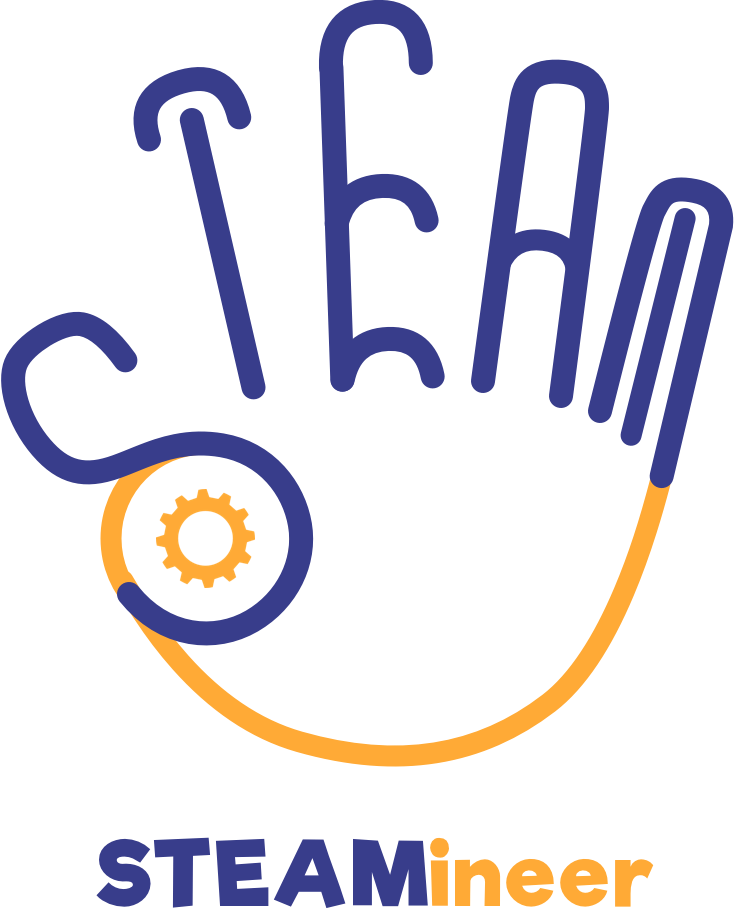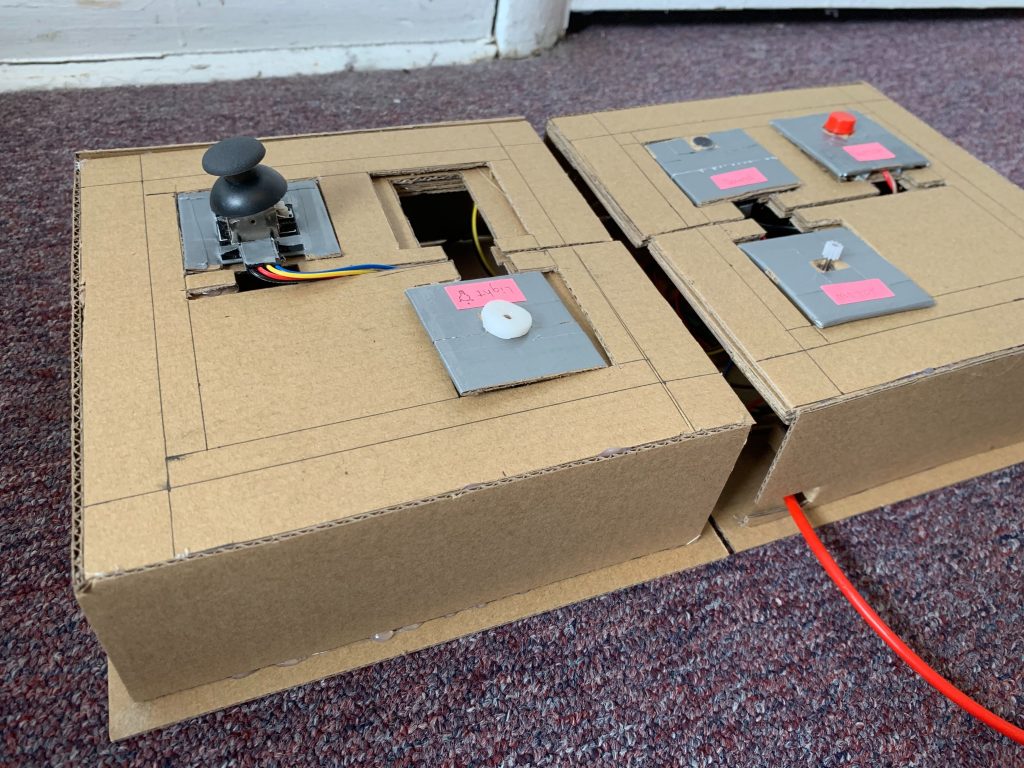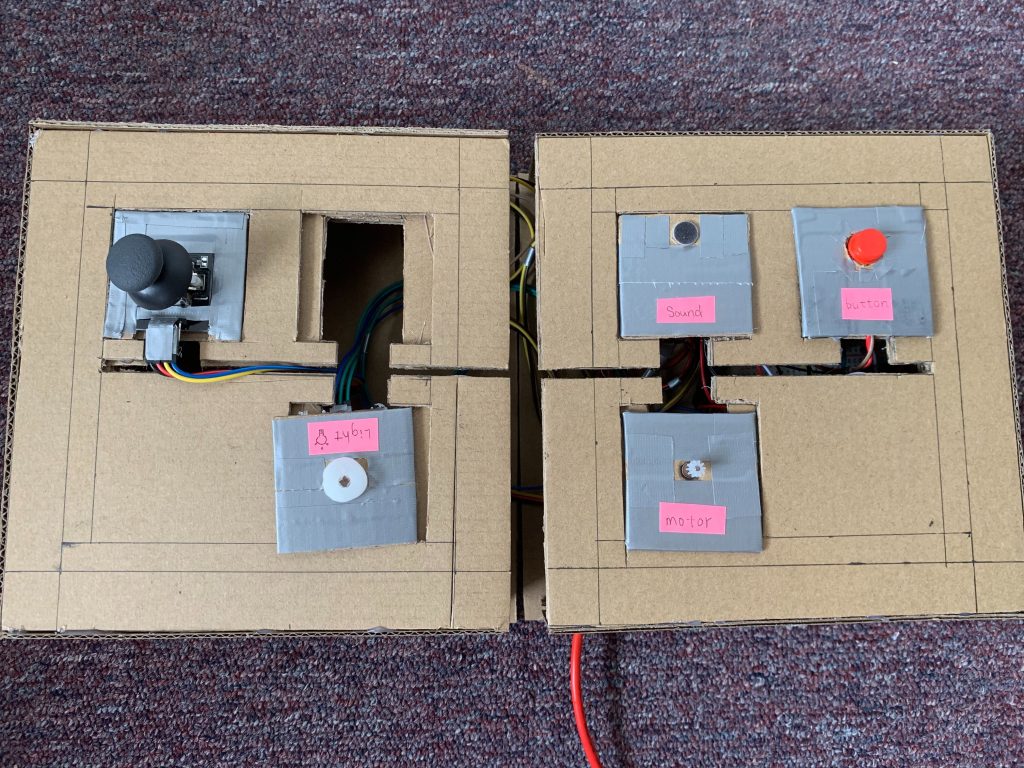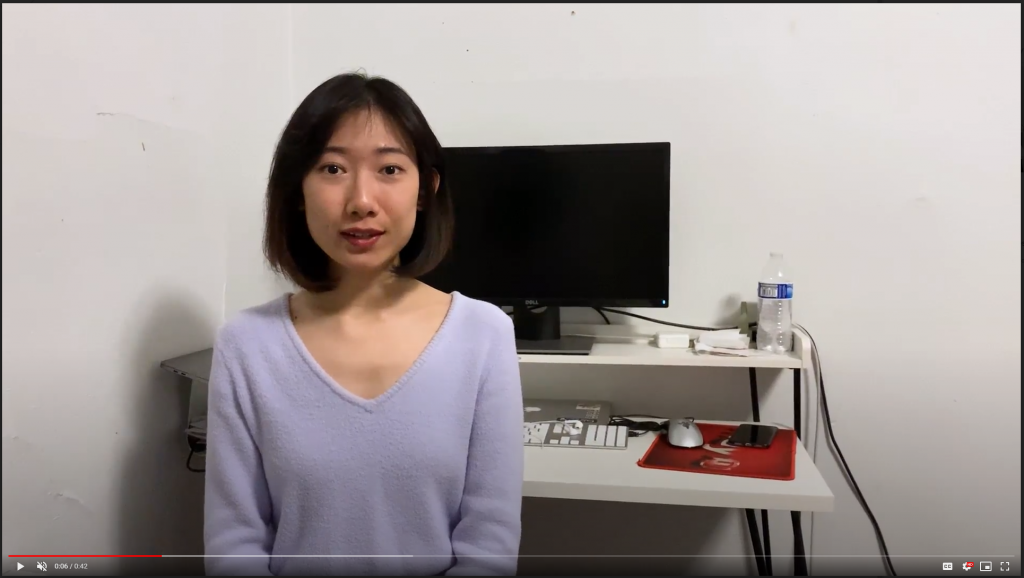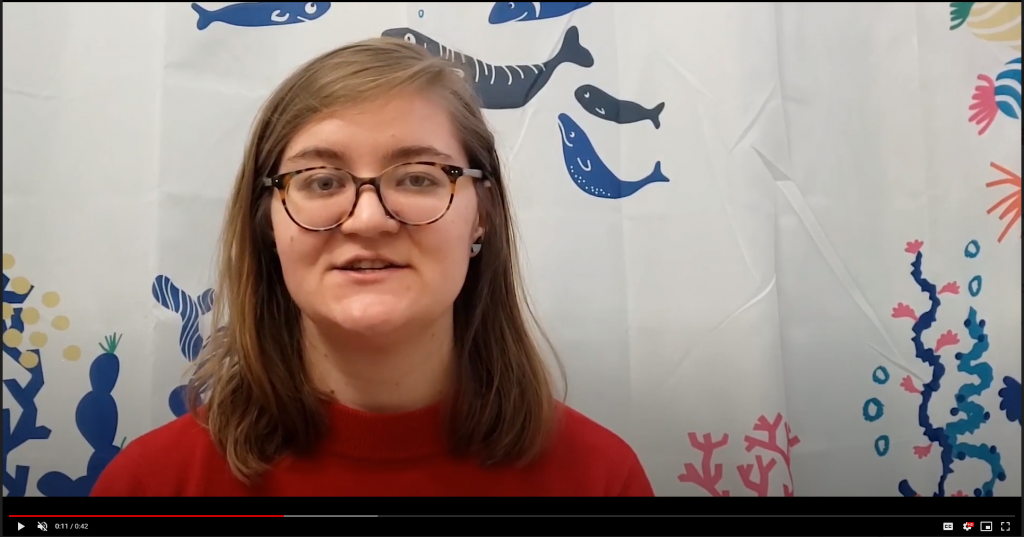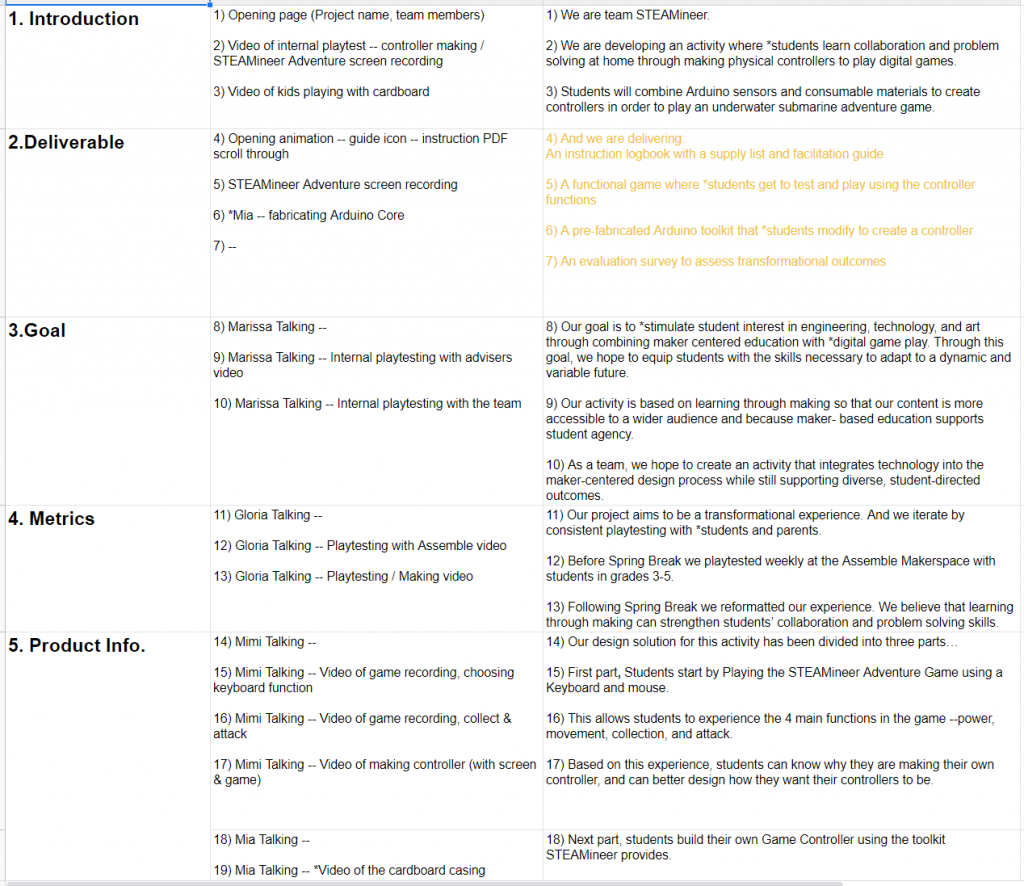Team STEAMineer spent Week 12 adapting our activity based on our first remote playtest in preparate for our next Playtest. Friday of Week 11 we playtested the project with the Culyba Family. Sunday, the Arduino Controller elements were returned to Mia for iteration, and the team went to work for our next playtest on Friday with the family of another ETC faculty Member, Ruth Comley.
Sunday evening Isabel prepared our digital materials for ETC Remote Playtest Day. Under normal circumstances, the ETC hosts “Playtest Day” on a Saturday later in the semester. The ETC invites naive guests (corresponding to the age-groups of project audiences) to the ETC for a full day of playtesting projects. This year it was scheduled for April 4th, but in order to keep everyone safe, the event was made remote and the audience became ETC Faculty and Alumni. The event was held April 6-8 so project teams had to have materials submitted by the 5th. Since our project would be challenging to playtest remotely in its entirety, we playtested the first steps of the activity. Playtesters were given access to the beginning pages of the instruction guide, the keyboard build accessible online, and a survey based on only the beginning of the activity. (Yifan spearheaded the effort to develop two surveys in Weeks 10 & 11.)
To see the instruction guide for playtest day, go here: https://drive.google.com/file/d/1mC70z_4VjVYLxihdmrUh6HyBFOke3zAj/view?usp=sharing
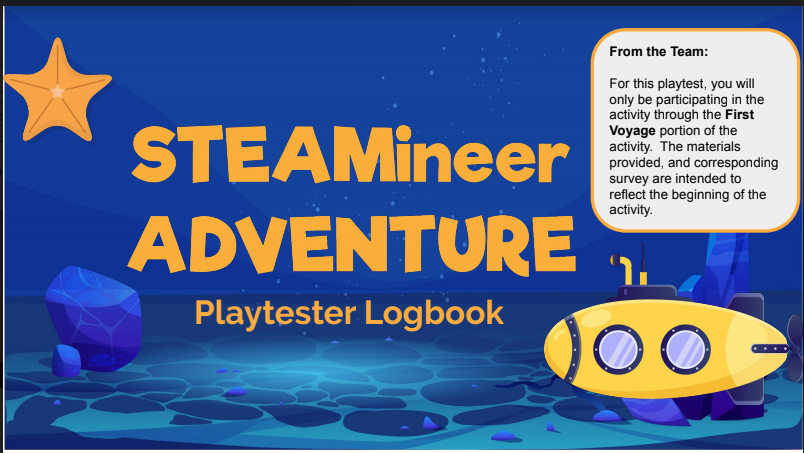
Initially, we had some hiccups with survey links and the instruction guide links, but things were running smoothly by Monday afternoon. Ultimately we had 25 playtesters during the 3 days of playtesting. The majority of our playtesters played video games less than four hours a week with the majority playing video games less than an hour per week. Over three-quarters of our playtesters were 25 or older, and over 70% of our playtesters were older than 40. One educational/maker technology we failed to list in our options for technology playtesters are familiar with is LEGO or more specifically, LEGO Mindstorm. When asked if playtesters would want to replay the game or share the game with friends, the majority answer to both prompts was neutral (3) on a scale of 1-5. Of the playtesters selecting values closer to negative or positive as responses, there were more positive responses than negative responses. Only 18 playtesters responded to the question about game pace and time for adjusting to the game. Of the responses, half of playtesters took 10-30 second and 6 playtesters took longer than 30s. 19 playtesters responded “Yes” when asked if they had fun playing the game.
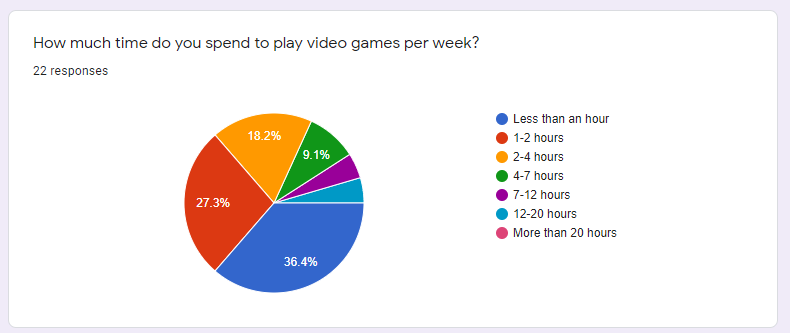
We got lots of positive feedback about the art style for the game, as well as collecting the crystals. The feedback about constantly needed to power the submarine using the mouse scroll wheel received mixed results– some playtesters found it fun and others found it to be a nuisance. Competing against yourself to collect more crystals also received mixed feedback. Some players enjoyed the challenge while others found it unmotivating. One comment reflected on the small learning curve of the game– something the team has intended in an effort to better support playing with a homemade controller.
Over half of our playtesters wanted multiple levels. Other additions playtesters would like to see include different scoring mechanisms for different mechanics, having a clear win/lose mechanic, and different enemy attacks. Playtesters also suggested adjusting the battery charging mechanic to be more like a throttle or to better store energy to avoid almost constant input. We also received input from multiple playtesters about a different means for deterring sea creatures other than shooting– like avoiding them or repelling them with some kind of force field. The majority of playtesters found it easy to attack the enemies and collect the crystals. When asked about controlling the submarine by keyboard, the responses were more dispersed with more negative responses than the questions about attacking or collecting. Only one of 22 respondents was uninterested in building a controller. Over half of respondents says Yes, and 9 playtesters replied “maybe”. When asked if playtesters would want to “challenge themselves to collect more crystals next time?” The majority of the playtesters responded “yes”.
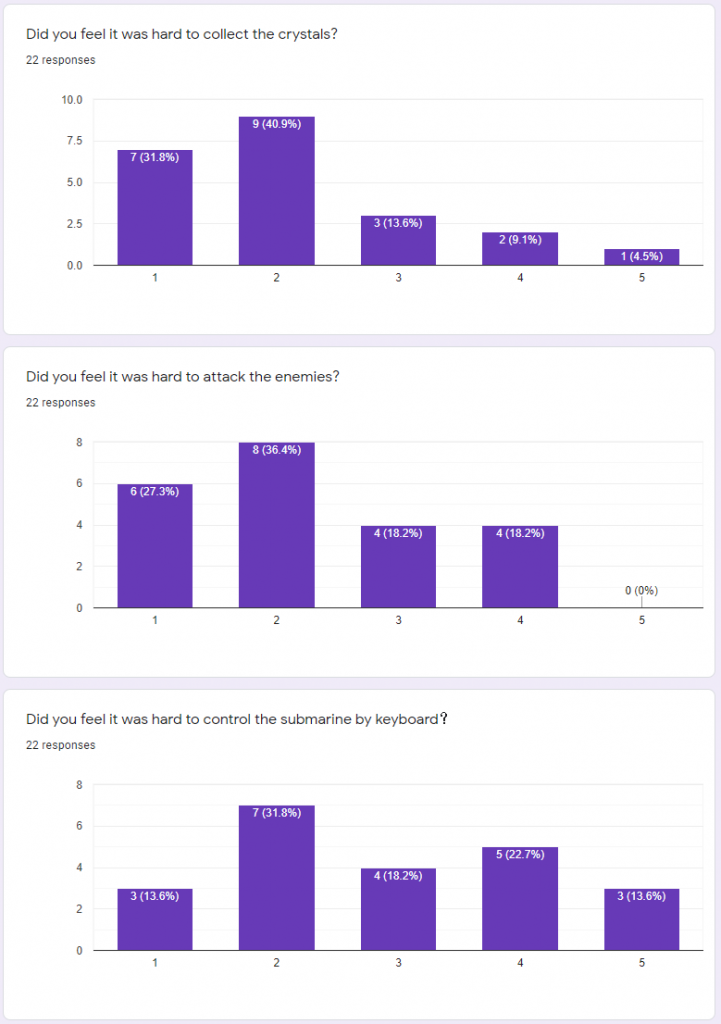
Additional specific feedback we received noted how our playtest day information failed to fully represent our activity. As a team, we agree with this feedback, and we are adjusting our approach to Soft Opening in order to better reflect our activity as a whole. We also received feedback about the clarity of our story. We introduce the idea that it was people who were originally the antagonists of Atlantis, however in our game, players are attacking sea creatures, and specifically octopi. One suggestion was to change the enemies to robotic octopi or enemy submarines. Crystal collecting is also linked with restoring life in Atlantis, and one playtester suggesting visually representing Atlantis’ vitality by making the environment more lush as players collect more crystals. We were also encouraged to represent our story content differently– instead of using a block of text, perhaps implementing still images. Something the team was also keen to respond to was feedback about giving players more meaningful motivation to make controllers. Requiring more finesse in steering or altering the environment were suggestions for an approach to adding more meaningful motivation. Another playtester took it a step further and encouraged more in-game theming to match the inputs. That way the game mechanisms could support student logic for different controllers.
Yifan met with Marissa to work on synthesizing the feedback and consolidating solutions from Remote Playtest Day and playtesting with the Culybas to present to the team. Yifan typed up a summary of the feedback for the team, and the team will be discussing the solutions and implementing them during Week 13. This way, the team can also incorporate the feedback from the playtest with Ruth’s family. They also worked on updating our surveys to make sure the questions the team asked were prompting responses that were helpful to the team. Yifan identified the challenge the team faces in trying to make appropriate adjustments to our experience knowing our Remote Playtest Day guests did not experience our full activity and are outside of our intended audience. Our feedback also highlights a recurring conundrum the team has been facing since we have transitioned to remote work: working on the gameplay is more accessible to the team, and something the team seems to feel more invested in. How do we merge what is more convenient, what the team is more interested in, and what our original goals were with new circumstances and limited time remaining in the semester? Additionally, our game is being presented alongside projects entirely focused on making games. How can we make a game that is compelling for players while still supporting controller construction? Should we be concerned that our game is different and we have focused less on gameplay mechanics?
Monday our team addressed the issue of hardware incompatibility. We ordered additional temperature sensors to replace the ones that broke. We also opted for sensors that we anticipate will be more sensitive to smaller changes in temperature. If these new temperature sensors can be implemented, it would be easier for guests to affect the sensor and trigger the input. We also ordered a soldering iron and pins to create our own connections between the inputs and the microcontrollers. To save time, Dave also shared his soldering iron with the team.
By the end of the week, Max and Mimi had the materials they needed to modify our hardware to fit our project needs. However, we are still encountering issues with the new temperature sensors. We hope to have them implemented for Soft opening, but we may have to exclude them from our final deliverable.
Mimi and Max worked on implementing and publishing the new game build with a section for testing the inputs. Yifan supported them with UI graphics and evaluating user flow. Yifan was able to playtest the activity with the controller in order to experience the activity in its entirety. Something that is crucial to our experience design, but something that feels rare working as part of a remote team. As a team we wanted the testing space to be accessible without interrupting the journey of the player. Ultimately, the testing space was implemented before the playing space so players could go from testing immediately into gameplay. The testing space is designed to prompt players after a specific amount of time to see if they are ready to play the game. Changes to the background in the testing space were also implemented to reinforce to players that the testing space was different from the game. In order to test the inputs, players have to select an input for all three submarine functions they can control– attack, power, and collecting. Although the area regularly prompts players about starting the game, player have an unlimited amount of time to test their controller inputs.
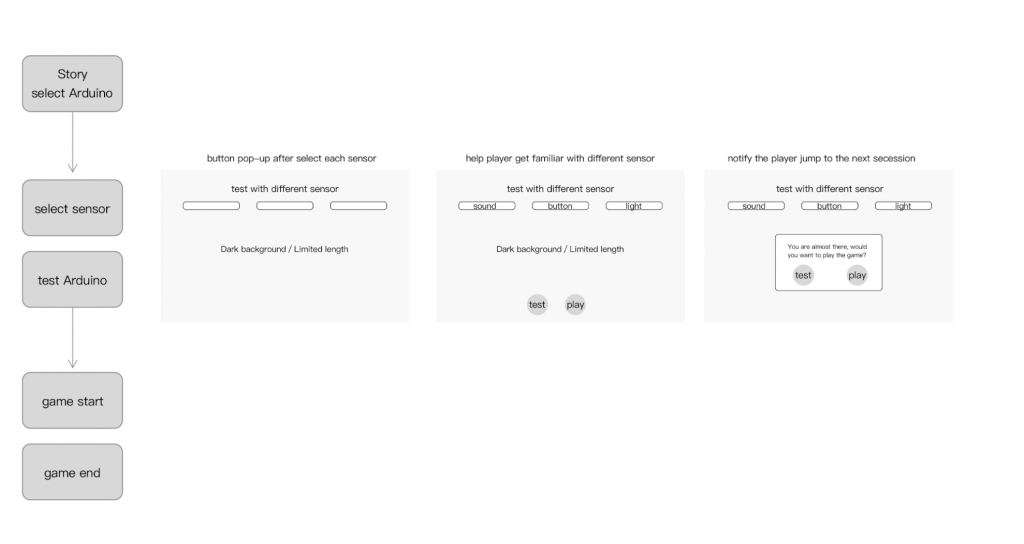
The ability for players to use these functions came directly from the playtest with the Culybas. The team felt it was inherent for playtesters to use the joystick for motion, so the team agreed to permanently set the joystick as the movement control input. The joystick is also the only input that supports more than two input options. The other inputs have two options– similar to a “yes” state and “no” state. In order to accomodate the four functions needed for motion (Up, down, forward, and backward), players would need to assign two functions to movement in place of the joystick. Max also identified the issue of two inputs preventing players from indicating to the game that the submarine needed to stop moving in a particular direction.
Another change made to our activity was the controller design. Mia completely redesigned the controller so inputs were on the same face of the controller, and so guests could control where on the face the inputs were located. The team also decided to make the entire interaction two-player, to make the interaction easier for guests to play, so Mia created two control panels for the functions that guests could distribute the inputs between. These changes were also a result of our playtest with the Culybas. Since the interaction with the controller required three people to control, Mia referenced more traditional physical interfaces for her design. Having inputs on the same faces makes it easier for a single individual to operate multiple inputs simultaneously. Another benefit of the design is that it manages to give guests a feeling of freedom and creativity in the position of the inputs while still limiting their options to only three input locations. Mia created the controllers out of cardboard. She even created square modules out of duct tape (similar to Code Gamer) for each input. Mimi worked with Mia to ensure the functionality of the controller and the inputs before packing up the controller for our next playtest.
The changes to the controller as well as the game were reflected in edits made to the instruction guide. The pictures of the controller, the supplies included in the kit, and the testing section of the game were all included in the instruction guide updates. Mia also reformatted the instruction guide to include new graphics and ensure the guide had a cohesive theme. There was also an addition of a page encouraging guests to modify the motor input and sharing best practices for how to do so. Yifan created illustrations of each Arduino input to add to the instruction guide. A printable version of the instructions, without the graphics and condensed into fewer pages is also in the works, but was not ready for the playtest at the end of the week.
To see the latest version of the instruction guide, go here: https://drive.google.com/file/d/1T10scYWCjtpmrI1jdP58stjvjeP1db8b/view?usp=sharing
Isabel worked on preparing content for the project’s video trailer. Each semester project teams create videos about their projects to help promote and document their work. Isabel wrote a script and directed the team in recording our own interview and voice-over content remotely. By the end of the week, everyone on Team STEAMineer had shared a video clip of themselves reading a section of the script for the final video. Check out the Media section of our website and our Week 13 blog to see the latest version of our team trailer.
Isabel was also hard at work on communicating with Ruth about our next playtest. She sent her information about the game build, the instructions, and the survey. Based on feedback from Dave, Isabel also shared information about the camera angle to use for the playtest. Marissa picked up the controller and delivered it to Ruth’s family for playtesting over the weekend.
The team wrapped up the week meeting with our faculty advisers to go over our strategy for soft opening, information about in-game analytics, and additional tips to share with future playtesters. As a team we need to evaluate the importance of the gameplay interaction in our palytesting results. Do we want playtesters to record their gameplay? Dave also encouraged us to inform playtesters about best practices for recording and uploading video of the playtests based on his own experience. Yifan continued working on in-game analytics and by the weekend, Max had our in-game analytics up and running. Isabel shared information with Max about User Agreement forms for collecting data from our browser-based game. For softs the team is also sorting out our approach to presenting a “facilitated” activity and playtest for our faculty. The current plan is for one member of Team STEAMineer to go through the activity via a Zoom call while another member facilitates the experience. As a team we need to determine what to say, where we might be making assumptions that are untrue, and how we can best illustrate what our project is.
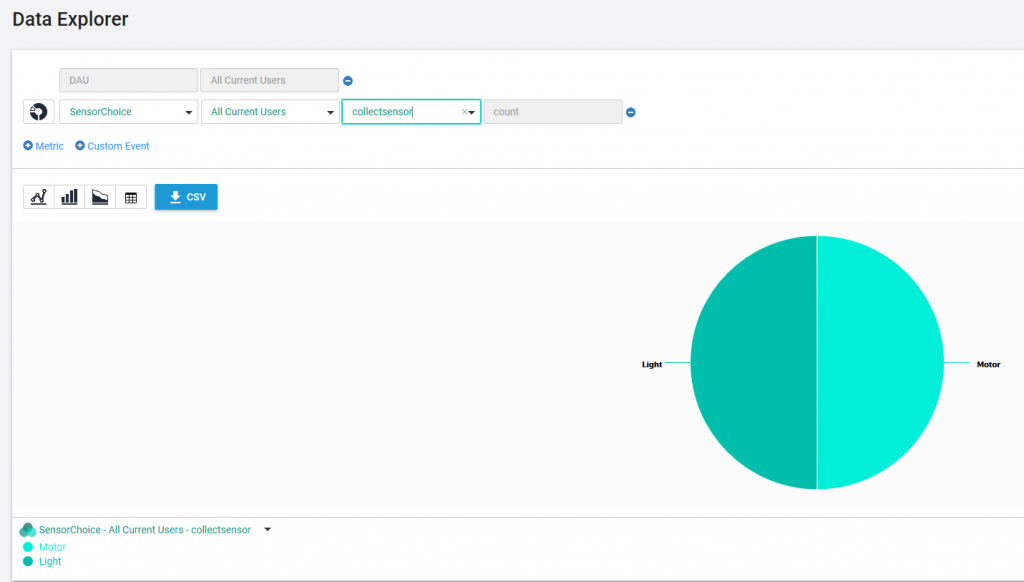
Check in for Week 13 to see our project trailer, hear about our playtest with Ruth’s family, and learn more about Team STEAMineer’s strategy for Soft opening!
